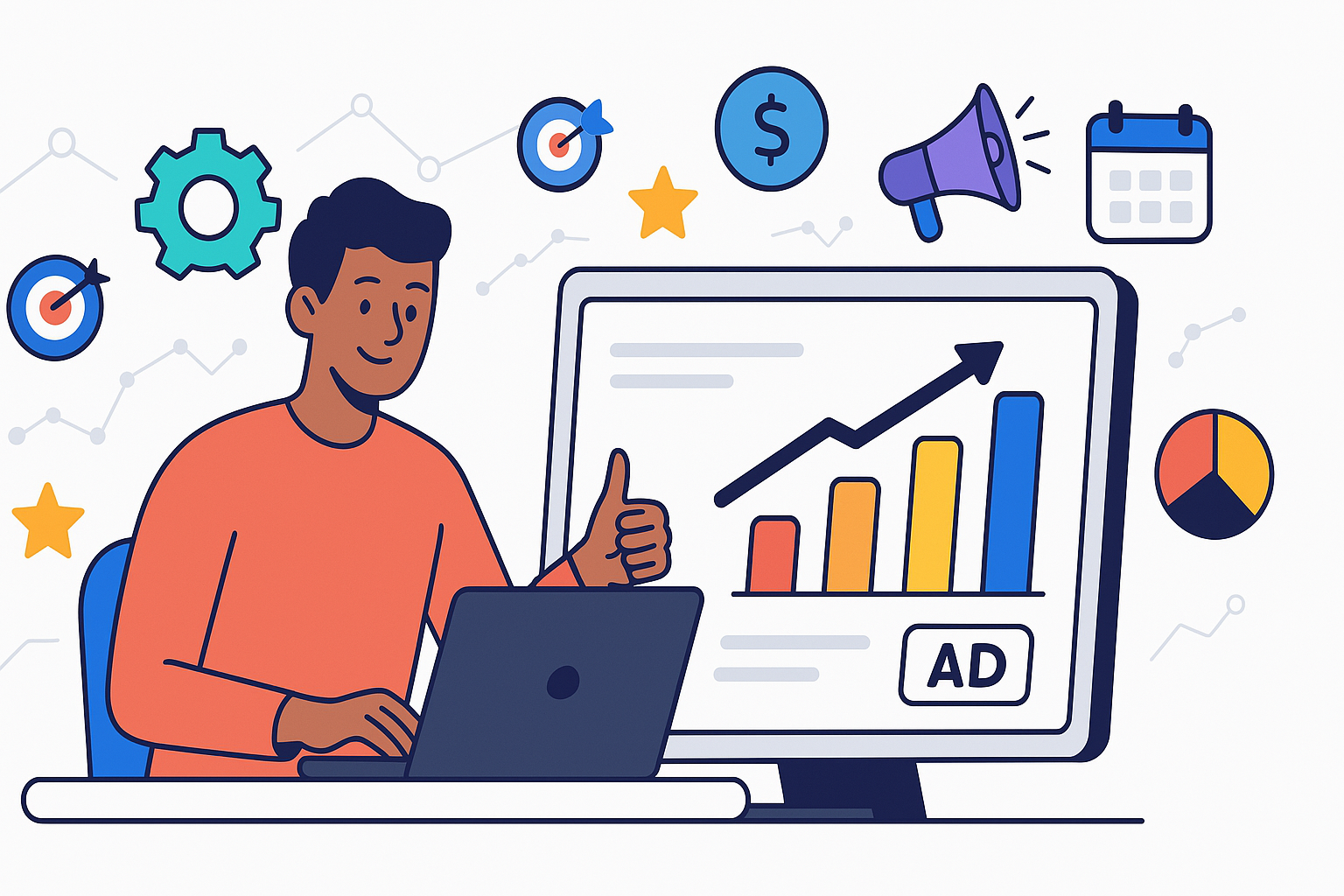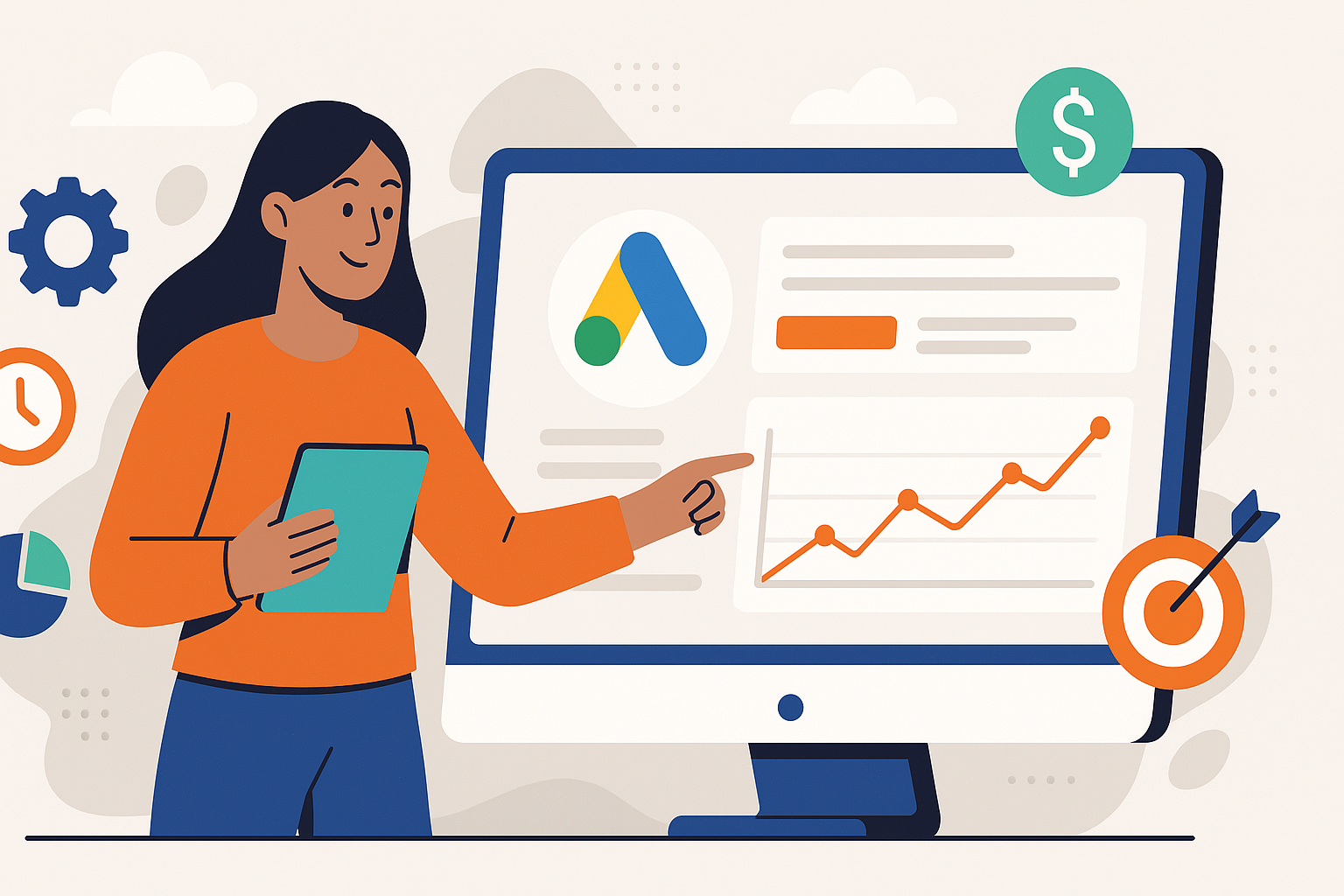What is a landing page?
by Francisco Kraefft on 14 Mar, 2024
In the digital marketing world, the term "landing page" often comes up, especially when discussing strategies to boost conversions and capture leads. But what exactly is a landing page, and why is it crucial for your online presence? This article explores the definition, types, essential elements, and best practices for creating landing pages that drive results.
What is a Landing Page?
A landing page is a standalone web page designed for marketing or advertising campaigns. It's where a visitor "lands" after clicking on a link in an email, an ad, or another digital location. Unlike other web pages, which typically encourage exploration, landing pages are crafted with a single focus or goal, known as a call to action (CTA).
Types of Landing Pages
Click-Through Landing Pages
These landing pages are specifically crafted to offer just the right amount of information to capture visitors' interest and encourage them to navigate to another page. They are commonly used in ecommerce to showcase and provide details about a product before the customer makes the final purchase decision.
Lead Generation Landing Pages
A form collects essential user data on these web pages, including names and email addresses. This data is vital for growing email subscriber lists and developing potential customer relationships. Another everyday use for these landing pages is to target a specific audience with a particular offer or product to get better conversion rates.
Microsites
A microsite is a small, independent group of web pages designed to achieve a specific objective. Typically, microsites are used in conjunction with more extensive marketing efforts to provide in-depth information on a particular topic or product.
Key Elements of a Landing Page
- Headlines: The headline is the first thing visitors see, so it must be compelling, relevant to the campaign, and convey the benefit of the offer.
- Calls to Action (CTAs): A strong CTA guides the visitor toward the desired action, whether filling out a form, downloading an eBook, or purchasing. Effective CTAs are clear, concise, and prominent on the page.
- Visuals: High-quality images, videos, and graphics can enhance the message and help retain visitor attention. Visuals should be relevant and support the overall goal.
- Forms: The form should be simple and only require essential information to reduce friction and increase submission rates. The design and placement of the form are critical to its effectiveness.
- Social Proof: Testimonials, reviews, and case studies can build trust and credibility, encouraging visitors to take action.
Design Principles for Landing Pages
- Simplicity: A clean, uncluttered design helps keep the visitor focused on the primary goal. Every element should serve a purpose.
- Mobile Responsiveness: With an increasing number of users accessing the web via mobile devices, ensuring your landing page is mobile-friendly is essential.
- Fast Load Times: Slow pages lead to higher bounce rates. Optimize images and minimize scripts to improve load times.
The Role of SEO in Landing Pages
Keyword Optimization
Ensure the strategic placement of pertinent keywords throughout the landing page to enhance its search engine ranking and overall visibility to potential visitors.
Meta Tags
Crafting compelling meta titles and descriptions involves creating concise, informative titles and descriptions incorporating relevant keywords. These titles and descriptions should not only accurately represent the page's content but also entice users to click through by piquing their interest and providing a clear value proposition. To maximize the effectiveness of these elements, it's important to strike a balance between search engine optimization and user engagement.
URLs
Use clear and descriptive URLs that accurately represent the page's content and include relevant keywords. This can help improve search engine optimization and help users understand the page's content before clicking the link.
How to Create a High-Converting Landing Page
Creating a high-converting landing page involves several steps:
- Define Your Goal: Understand the specific action visitors want to take.
- Know Your Audience: Tailor the message to address your target audience's needs and pain points.
- Craft a Compelling Offer: Offer something of value, such as a free trial, eBook, or discount.
- Write Persuasive Copy: Clear, concise, and benefit-focused copy is vital to conversions.
- Design for Conversion: Use visual hierarchy to guide the visitor's attention to the CTA.
- Test and Optimize: Continuously A/B test different elements to find what works best.
Best Practices for Landing Page Optimization
A/B Testing
One effective way to optimize your digital marketing efforts is to experiment with different elements such as headlines, call-to-action (CTA) messages, images, and forms. By testing variations of these elements, you can identify which versions perform best and yield the highest results. This process allows you to refine your digital content and better understand what resonates with your audience.
Heatmaps
Site heatmaps are a valuable tool for analyzing user behavior on a webpage. They provide a visual representation of where users are clicking, how they are scrolling, and where their attention is focused. By studying heatmaps, you can gain valuable insights into how users interact with your page, identify popular or overlooked areas, and make informed decisions for optimizing the layout and design to improve user experience.
Analytics
When analyzing your landing page's performance, it's important to track various metrics to gain a comprehensive understanding. Key metrics to consider include conversion rates, which indicate the percentage of visitors who take a desired action; bounce rates, which show the percentage of visitors who leave a page without engaging with it; and time on page, which reflects how long visitors spend on your landing page. These metrics provide valuable insights into the effectiveness of your landing page and can help you identify areas for improvement. Google Analytics is going to be your best friend for landing page analytics.
Common Mistakes to Avoid
Overcomplicated Design
A webpage cluttered with too much information can create a sense of chaos and overwhelm visitors. This can distract them from the page's primary purpose and make finding what they want more complex. Therefore, it's crucial to maintain a clean and organized layout to ensure that the primary goal of the page is easily navigable and the content is easily digestible.
Lack of Clear CTA
Visitors are more likely to take action and complete a desired goal, such as making a purchase or signing up if they are provided with a clear call-to-action (CTA) that clearly directs them to what steps to take next. To optimize the chances of conversion, the CTA should be prominent, easily visible, and straightforward to follow.
Tools for Building Landing Pages
Several tools and platforms can help you create professional landing pages without extensive coding skills. Popular options include:
- HubSpot
- Unbounce
- Leadpages
- Instapage
The Future of Landing Pages
As digital marketing evolves, so do landing pages. Trends to watch include:
- Personalization: Tailoring content to individual user behavior and preferences.
- Interactive Elements: Incorporating quizzes, polls, and interactive content to engage visitors.
- AI and Automation: Using AI to optimize and personalize landing pages in real time.
Conclusion
Landing pages are powerful tools in digital marketing, offering a targeted way to capture leads and drive conversions. By understanding a landing page's key elements and best practices, you can create effective pages that support your marketing goals. Remember to test and optimize continually to ensure the best performance.
Reach out to us to make your first landing page.
FAQs
What makes a good landing page?
Creating a successful landing page is an art form in itself. It needs to be crystal clear in its messaging, laser-focused on the target audience, and ideally in sync with its ultimate objective. A captivating headline is the first thing that grabs the visitor's attention, followed by an irresistible offer that they can't refuse. The call-to-action (CTA) must be compelling, seamlessly guiding the user towards the desired action. And, of course, distractions should be kept to a minimum to ensure the visitor stays on track towards conversion. A good landing page is like a well-oiled machine, with every element working harmoniously to achieve its purpose.
How long should a landing page be?
When crafting the perfect length for your content, consider the intricacies of your offer and the depth of information required to effectively persuade visitors to take action. Whether it's a detailed product description or a compelling call to action, the length of your content should be tailored to meet the specific needs of your audience. Remember, there is no one-size-fits-all approach to creating engaging and conversion-driven content.
Why are landing pages important for SEO?
By strategically incorporating relevant keywords into your landing pages, you can boost your search engine rankings and attract the right audience to your website. This targeted optimization ensures that your page is easily discoverable by users searching for specific terms related to your business or industry. As a result, you can drive qualified traffic to your site, increasing the likelihood of conversions and ultimately growing your online presence. So, don't underestimate the power of keyword optimization when it comes to enhancing the performance of your landing pages.
Can I use multiple CTAs on a landing page?
While having a clear primary call-to-action to prevent visitors from feeling overwhelmed is important, incorporating secondary CTAs that align with the primary objective can enhance the user experience. By strategically placing secondary CTAs that support the primary goal, you can provide additional engagement opportunities without confusion. This approach allows you to guide visitors toward taking the desired action while still offering valuable alternatives that contribute to the overall success of your website or campaign. Remember, the key is to balance simplicity and effectiveness in your call-to-action strategy.
What is A/B testing in landing page optimization?
A/B testing is a powerful tool for optimizing website performance and maximizing conversions. By creating two versions of a page (A and B) with a single varying element, marketers can scientifically determine which design, copy, or layout resonates better with their audience. This method allows for data-driven decision-making, enabling businesses to refine their strategies and achieve higher conversion rates. A/B testing is a valuable practice that helps businesses stay ahead in the competitive online landscape.
How can I reduce the bounce rate on my landing page?
Ensure the landing page aligns perfectly with the expectations set by the ad or link that initially caught the visitor's attention. A clutter-free design will help guide the reader's focus toward the vital information while engaging and persuasive content will keep them interested and motivated to take action. By maintaining relevance, simplicity, and impactful messaging, you can create a seamless and satisfying user experience that increases the likelihood of conversion.


